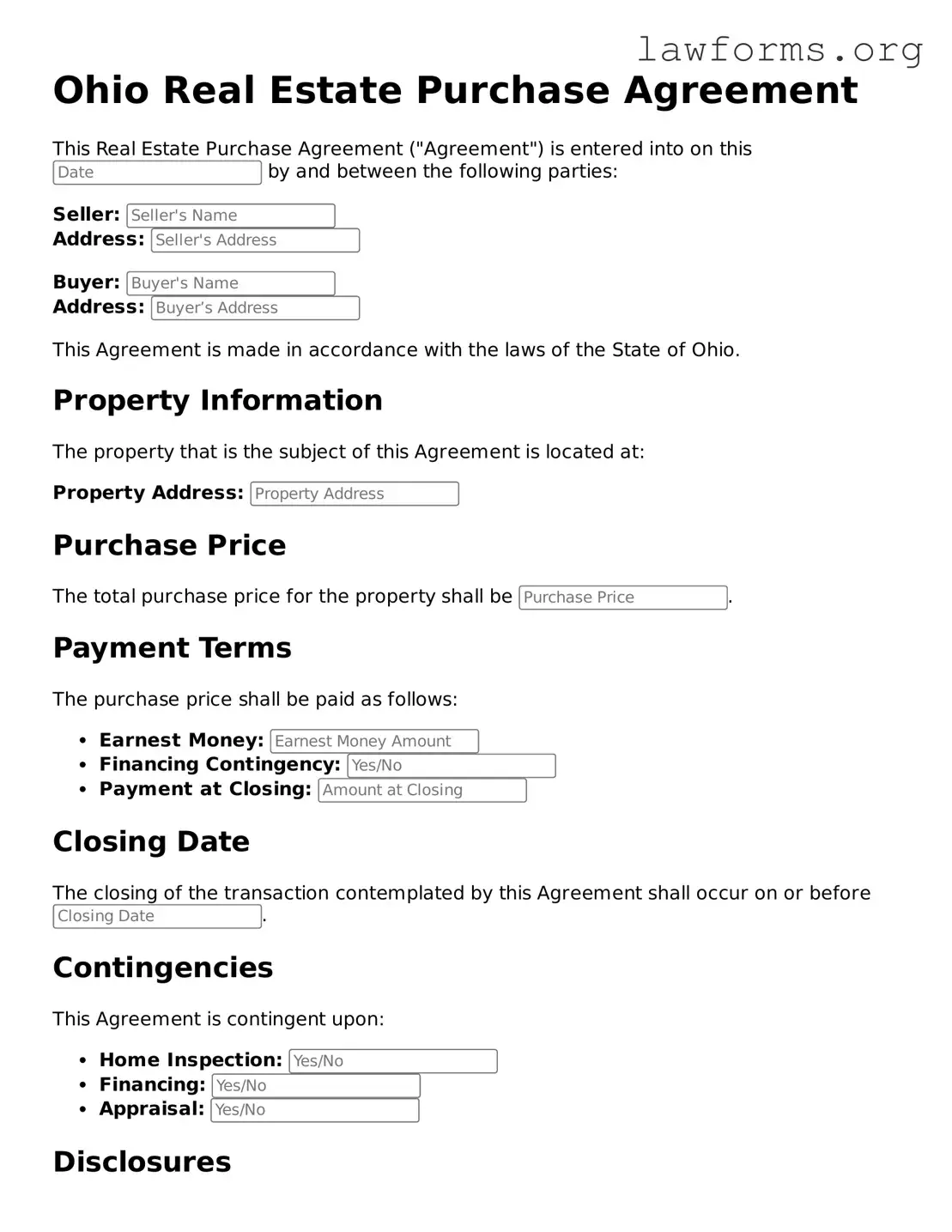Attorney-Approved Real Estate Purchase Agreement Template for the State of Ohio
The Ohio Real Estate Purchase Agreement form is a legal document that outlines the terms and conditions for buying or selling property in Ohio. This agreement serves as a crucial step in the real estate transaction process, ensuring that both parties are clear on their obligations. If you are ready to proceed, fill out the form by clicking the button below.
Customize Document Online
